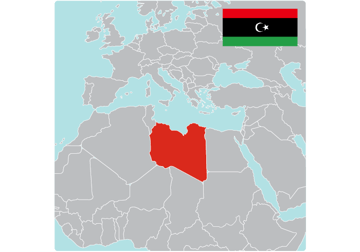Help Children in Libya
As instability continues in Libya, many children and families are fleeing violence, braving the perilous journey to find safety in Italy and elsewhere. Libyan children who have witnessed the violence of the Arab Spring continue to suffer severe distress. They desperately need food, healthcare and access to caring professionals who can help them overcome the traumatic experiences they’ve suffered.
The Challenges for Children in Libya
Displaced by violence and forced to flee their homes, many of Libya’s children lack access to healthcare, food, education and basic
services. They desperately need your help.*

Our Work for Children in Libya
In camps for families displaced by the violence in the aftermath of the Arab Spring, children struggle with nightmares and distress. In response, Save the Children set up child-friendly spaces to provide Libyan children with a safe place to play, learn and overcome tragedy. These protective environments are where children gather to play and talk about their experiences with caring professionals and each other, allowing them to overcome chaotic and tragic situations.
Save the Children also works to protect and save the lives of vulnerable children and families fleeing conflict by coordinating rescue operations at sea. According to testimonies collected by Save the Children — who helped survivors at a port in Reggio Calabria — a boat carrying 550 people capsized 24 hours after leaving Libya, and as many as 400 people are still missing, many of whom are thought to be unaccompanied children.
How to Help Children in Libya
Donate
Support Save the Children’s mission. Donate to help children in Libya, and around the world, survive and thrive.
Join Team Tomorrow
Join Team Tomorrow and your monthly donation will go toward addressing the needs of children affected by today’s most urgent issues.
Browse the Gift Catalog
Give a unique and meaningful gift that will bring joy – and change lives. Find something for everyone on your list.
Sources: * Unless otherwise noted, facts and statistics have been sourced from Save the Children’s 2018 End of Childhood Report. You can access detailed data here. Other sources as follows: Population: CIA World Factbook 2015; The World Bank, 2016; Unesco Institute for Statistics (UIS)




